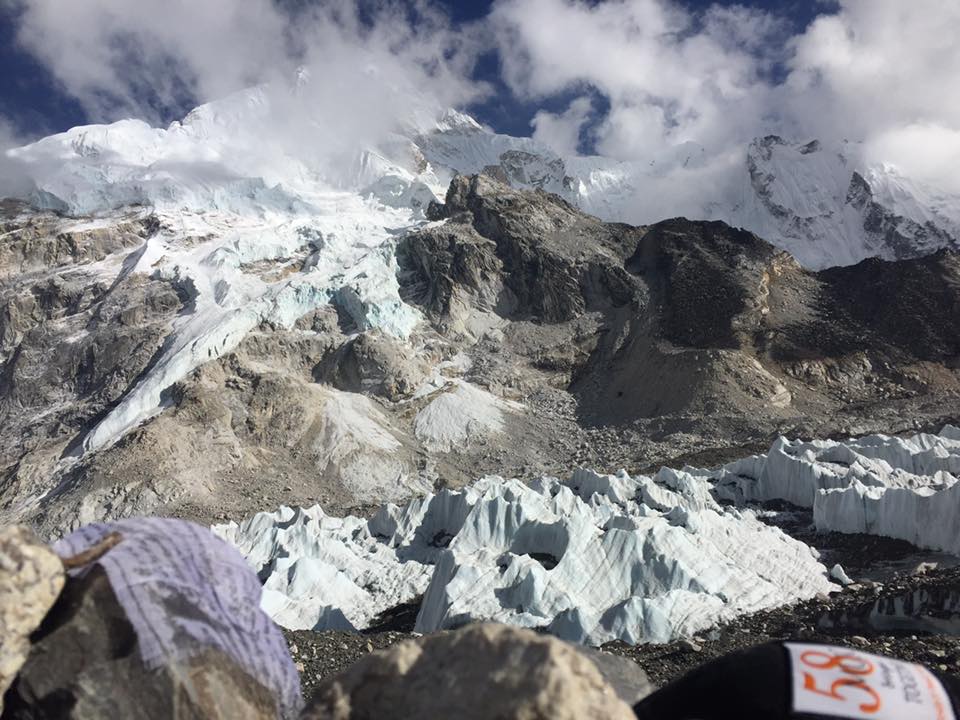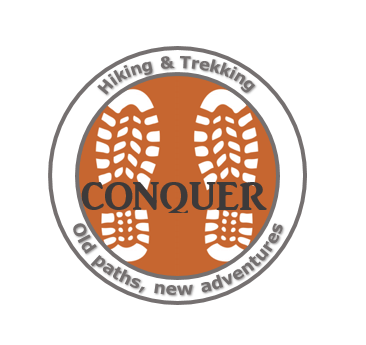Is the Everest Base Camp trek achievable for me?

The infamous Everest Base Camp Trek is a very popular challenge for individuals, groups and charity organisations. Many people have considered taking part in this challenge but decide against it either through fear of not knowing what the trek entails or not believing that they can complete it successfully. We want to give you an insight into the trek and overall trip, allaying some fears and give you a feel for what to expect.
From landing in Kathmandu, Nepal you will be embraced into the Nepalese culture and made to feel very welcome by the local people, experiencing the sights and sounds of this bustling vast city. Usually after an overnight stay in Kathmandu we depart, heading to the airport for a short half hour plane journey to Lukla, one of the highest airports in the world nestled amongst the stunning Himalayan mountain range. This is a truly breathtaking experience in itself as you catch glimpses of the peak of Mount Everest and much more.
Upon landing at Lukla our groups meet up with the best Himalayan mountain guides and team of Sherpas who, together with our own UK Mountain Leaders, are with you every step of the way. You are in very safe hands in terms of walking safety, weather conditions, clothing advice, food and drink, plus any medical or first aid needs.
The average Everest Base Camp treks can be between 10 to 15 days long, tailored to each particular group. Some days are longer than others in terms of the amount of trekking. So for example, some days could be 8 hours of trekking (4 hours am/4 hours pm) but then there are slightly shorter days and a few days built in for the purpose of acclimatisation. During these days the idea is to allow people to adjust to higher altitude levels, walk to a higher altitude then walk back down slightly to a lower altitude and remain there over night. This is a method used to help the human body adjust to the increased altitude safely.
Each night the accommodation is a Nepalese Tea House. Don't be fooled by the name, these aren't luxurious English tearooms! However, they provide warmth, shelter, cooked meals, drinks and snacks for the night together with twin rooms ready for you to roll out your sleeping bag and climb into bed for some much earned and much needed rest. Nights on the trek are cold. They become extremely cold the higher up you get and the closer to Everest Base Camp you get. However, with the help of a 4 season sleeping bag and thermal layers you can genuinely feel very warm and cosy at night.
The views are spectacular throughout the trek, whichever way you turn - but keep an eye on the path for any yaks or mules, they don't take any prisoners! Along the way you encounter small villages and dwellings were you can get a glimpse of Nepalese mountain life. A highlight is a visit to the Tengboche Monastery where the monks welcome visitors into their monastery at certain times each day to listen to their chants and prayers. This is an experience not to be missed.
This isn't an easy trek, these challenges never are and shouldn't be! However, with a suitable level of fitness and health, the correct preparation, a strong determination and the camaraderie of your trekking group around you it is entirely possible. You can do it!
This trek is often rightly described as "life-changing". It is, in a very positive way. After the days of hiking up and down the vast valleys of the Himalayas, crossing the fast flowing mountain streams over the magnificent rope bridges, encountering the villagers, the animals of the mountains and taking in the magnificent views of famous mountains like Lhotse, Makulu and Kala Patthar, you reach the wonder of Everest Base Camp. It is joyous occasion, even for your fatigued body and mind. it make every single step worth it to have reached base camp at the highest mountain in the world. You are literally almost on top of the world!
From Everest Base Camp the trek heads back to Lukla Airport over a few days followed by a plane back to Kathmandu. There is plenty to do in Kathmandu over the next couple of days before flying home. Some people choose to rest and recuperate at the hotel. others head out into the city to visit the markets, shops, restaurants, bars, temples etc. There is a wide range of things to see and do. A traditional Nepalese evening with food, drink, music and dancing is popular.
How fit do I have to be to trek to Everest Base Camp?
You obviously need to have a good level of fitness and be well prepared for this trek. The important thing is to prepare for a number of continuous days of walking. It isn't a race, it is a steady day of walking, each day of the trek. We advise getting out and walking simply as much as you can. Ideally you need to build some hills and mountains into you training regime too so that your legs and body are used to inclines. We can help you to prepare.
Will I get altitude sickness?
Altitude sickness is a concern for a lot of people. They hear about it affecting people on mountains but don't really know too much about it in truth. The answer to this question is that we don't know. Anybody can suffer from altitude sickness, no matter how fit you are. However, there are ways and means of reducing the possibility of it. As mentioned above, certain days of the trek will be spent acclimatising so staying at the same accommodation and walking to a higher level that day before descending again to sleep. The "walk high, sleep low" method is popular and successful. Some people choose to take altitude sickness tablets. Again, another proven helpful tool to guard against altitude sickness. Your GP or pharmacy can advise on this. There are also altitude chambers around the UK where you can go and get your body accustomed to the impact of altitude before you leave for Nepal. We can point you in the right direction for altitude chamber sessions.
Will I need to buy a lot of expensive clothing and equipment?
The simple answer is - No. You will definitely need to take a decent rucksack, a larger holdall, 4 season sleeping bag, worn-in good quality walking boots, thermal layers, fleece(s), a good warm coat, waterproofs, gloves, hat and good walking socks, plus a few other bits and bobs. However, they don't need to be top of the range expensive items of clothing. There are plenty of retailers out there that sell these items of clothing at a reasonable price. Again, we can advise with this.
What will I eat and drink?
All the main meals are included in the trek - breakfast, lunch and dinner. At breakfast food ranges from eggs, to porridge and pancakes. During the rest of the day it varies from curries to pizzas, noodles to soup. There are also opportunities to buy snacks such as chocolate bars and crisps. You are encouraged to drink the likes of ginger and lemon tea to help with the increase in altitude but coffee, other teas and soft drinks are available. However, it is imperative to drink a lot of water and to keep very hydrated. You will be trekking with at least 2-3 litres of water in your rucksack during the day.
Will my guides be experienced?
Yes! On our challenges you will be accompanied by at least 1 of our Mountain Leaders (dependent on group size) so you can sit back on the planes and coaches as our staff take charge and help you to get from A to B. Once in the Himalayas we join up with our Nepalese guides. We use the very best guides in the Himalayas so you can be rest assured that you are in very safe hands. We will also have a team of Sherpas carrying your belongings (apart from your day rucksack) so you don't have to worry about that. It will all be at the next teahouse along, ready and waiting for you upon your arrival.
These are just a few popular questions that potential trekkers ask but we are always happy to answer any other queries. Just email us: info@conquerhiking.com.
We hope this has given you a flavour of what to expect on the Everest Base Camp trek. If you have read through this blog and would like more information on this challenge then please send us an email (info@conquerhiking.com) or send us a message through our social media channels (Facebook, Twitter or Instagram).
